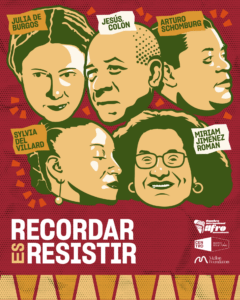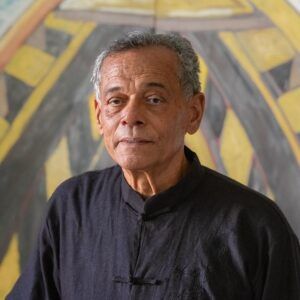
Diógenes Ballester
Contact
Cumbre Afro: The Negro Digs Up His Past in tribute to Arturo Alfonso Schomburg
by Diógenes Ballester
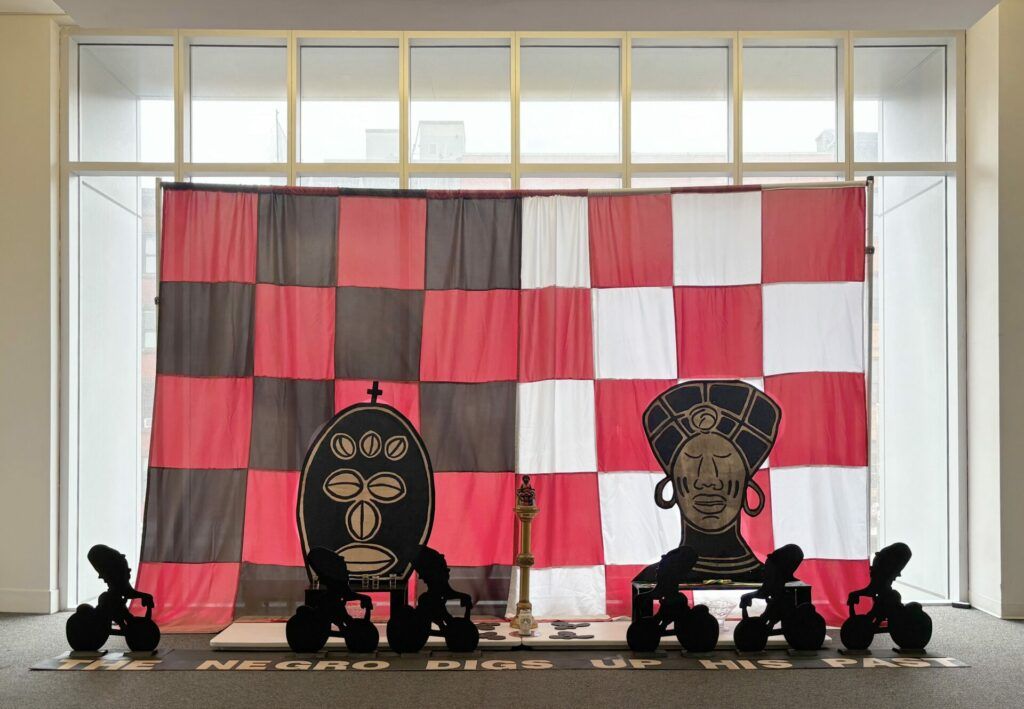
My work aims to explore, reconfigure, and re-contextualize both my personal history and the collective stories of our communities. These themes manifest through integrated altars or chapels for reflection, representing layers of experience and culture. Rather than offering a finished product, my installations are a process—an ongoing quest. By deconstructing the threads of religion, official history, technology, art, culture, politics, and oral history, I believe we strengthen our connection to the universal chain of history. This process of becoming a link in this chain is as significant as breaking the chains of slavery itself.
I am deeply honored to present my altar installation Cumbre Afro: The Negro Digs Up His Past in tribute to Arturo Alfonso Schomburg for the Cumbre Afro-2025 at the Center for Puerto Rican Studies, located at the Hunter East Harlem Campus. Preparing an altar is a deeply personal and intimate act for me, and it is both a privilege and a responsibility to create one in honor of Schomburg, a Puerto Rican who devoted his life to researching our African heritage. Schomburg traveled the world, collecting documents, artwork, and artifacts to challenge the false narratives that erased the richness of our ancestral past.
Cumbre Afro: The Negro Digs Up His Past is an altar installation that channels the energetic forces of the Caribbean Sea, calling upon the African ancestors who arrived on the shores of the Caribbean islands and the Americas. I conceived of this altar on the shores of La Playa de Ponce in Puerto Rico, and the title, The Negro Digs Up His Past, is inspired by Schomburg’s 1925 article in Survey Graphic Magazine, which serves as the starting point for this work.
The installation incorporates elements from my previous works, such as Arteology: Encounter with Ancestral History and The Crying of the Earth, which explore the spiritual journey of Afro-descendants and the legacies of our ancestors. From Arteology, I’ve included symbolic figures like Elegüa, the Yoruba god and guardian of the crossroads, and La Madama, the matriarchal figure representing the wisdom, knowledge and strength of our familial and collective ancestors of enslaved black women. These figures, called upon for wisdom, protection, and healing, invite viewers to engage with Schomburg’s enduring legacy while challenging the colonial narratives that have historically erased Afro-Caribbean knowledge and identities.

As an “arteologist,” I focus on visual representations that explore oral history, memory, mythology, ritual, and cultural identity within a transnational context. Like archaeologists, arteologists uncover and reinterpret artifacts to offer new perspectives on the past. My work enacts an appropriation of cultural objects and historical artifacts to access the past and reinterpret the present in a trans-Caribbean and transnational dialogue.
Once conceived in La Playa de Ponce, Cumbre Afro: The Negro Digs Up His Past moved to El Barrio in New York City, where the urban energy of the area provoked deep reflection. El Barrio’s metaphors of displacement, the reaffirmation of culture, and the mystical presence of Afro-descendant spiritual traditions all contributed to the spiritual synthesis that shaped the final altar. The installation integrates found objects and popular cultural symbols from the surrounding environment, including statuettes of Las Siete Potencias de La Madama and Elegüa, which are significant spiritual symbols in Afro-Caribbean traditions.

Included in Cumbre Afro: The Negro Digs Up His Past is a documentary by filmmaker and curator Judith Escalona. Through her research on Schomburg, Escalona learned that Schomburg had studied under Puerto Rican abolitionist José Julián Acosta, which helped shape his strong sense of identity as a black Puerto Rican by the time he arrived in New York City in 1891. Schomburg believed in Pan-Africanism and the independence of Puerto Rico and Cuba, founding an organization with the Cuban revolutionary José Martí. It is essential to note that Schomburg was not an American citizen at the time; his citizenship would come later, following the Spanish-American War and World War I.
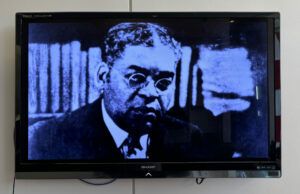
In conclusion, Cumbre Afro: The Negro Digs Up His Past for the Cumbre Afro-2025 Summit begins as a thesis born from my experiences in La Playa de Ponce, contrasted with the antithesis of the streets of El Barrio in New York City. My experiences collecting statuettes and magical objects in the local botánicas sparked the spiritual synthesis that shaped this altar. This work reflects on the civil rights movement, the commemoration of our ancestors, and the ongoing search for Afro-descendant identity. The figures of Elegüa, La Madama, and the transmigratory figurines riding bicycles symbolize the resilience of African heritage at cultural crossroads. Schomburg’s message, The Negro Digs Up His Past, continues to inspire us today, urging Afro-descendants to investigate, reclaim, and express our identities in various ways, socially, politically, spiritually, and artistically, as we continue this important journey into the 21st century.
Featured Artwork
Resources

Receiving and Returning: “La casa de arte y cultura de La Playa de Ponce”, a community art project by Diógenes Ballester - By Cheryl D. Hartup (2024)
Plástica | Article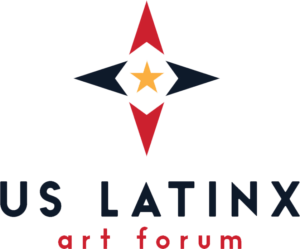
Diógenes Ballester - Artist Profile
USLAF | Profile